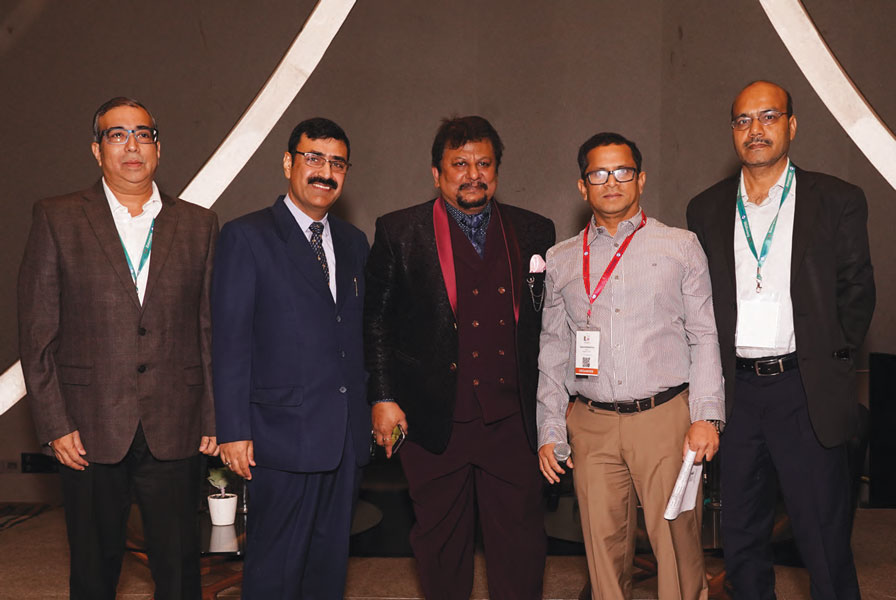From Left to Right :- Atul Kirane, Vice President (Systems), ISMT LTD; Rajesh Pandita, India Regional Head – Group Processes & IT, Thyssenkrupp India Private Limited; Dr Sunil Gupta, ADDL. Chief-IT/HR, Economic Research Unit Govt of India and Abhay bapna, AVP IT, Adani Wilmar Limited.
In this panel, the panellists from the Manufacturing sector elaborated on the growth of the sector and the functionality of the integration of the OT and IT networks.
Setting the context for the discussion on Digital Transformation in the Manufacturing sector, Rajesh Pandita, India Regional Head – Group Processes & IT, Thyssenkrupp India Private Limited, referred to the 1985 hit movie, Back to the Future. The sci-fi movie, took a time leap 30 years into the future, and depicted flying cars in the then imagined future of 2015. Today, in 2019 the incorporation of technology in the Manufacturing sector holds the promise of 2-seater flying cars by 2021. This shows how far technology has led the Manufacturing sector and how much there is still to be achieved by mankind.
“The evolving cycle of cars, also demands providing for the risks that new technology brings with it. So, when you have technology evolving in terms of flying cars, you also need to have additional systems to ensure safety like an automated aircraft control management. This is where technology steps into the manufacturing space as it evolves and addresses all risks that it introduces,” said Rajesh Pandita.
Continuing this discussion, the panel on Digital Transformation in Manufacturing Sector was moderated by Rajesh Pandita, India Regional Head – Group Processes & IT, Thyssenkrupp India Private Limited. He was joined on the dais by Atul Kirane, Vice President (Systems), ISMT LTD;
Dr Sunil Gupta, ADDL. Chief-IT/HR, Economic Research Unit Govt of India and Abhay bapna, AVP IT, Adani Wilmar Limited as the esteemed panellists.
Sharing his experience, Atul Kirane, Vice President (Systems), ISMT LTD said, “For the first step of Digital Transformation, we took up small steps that increased the visibility in our organization in terms of external customers as well as our internal customers. We introduced an app on our website. This was used by our competitors and prospective customers. This had a database of our products and dimensions we had as mandated by the world industries. The advantage of this app was that it allowed us to analyze the kind of traffic that was coming to our website in terms of what kind of users wanted to use our website. This gave the Marketing team insights into a potential customer base. The framework includes, at the lowest level, the basic production data, then the management system, the IIoT, then the Analytics layer, and this is all integrated to the customers, stakeholders, management and employees.”
Moving on to discuss the integration of OT and the IT networks as prompted by the audience, Rajesh Pandita said, “There have been instances where companies have integrated OT and IT networks. Unless you put in the right security control, you might not want to essentially integrate, or you may just leave it as one-way integration or communication, which is more like monitoring and gives control, but from the security point of view, you would want the path to be shut down, so it is about what you are trying to deploy or integrate. What is secure for someone else might not be as secure for you. You need to take a calculated risk and do a risk assessment based on what is the benefit you will accrue from it.”
Rajesh Pandita concluded the session by asserting that, Digital Transformation is more about the Digital mindset which has to be run by the CEOs of the company themselves which will bring transformation throughout the business.


